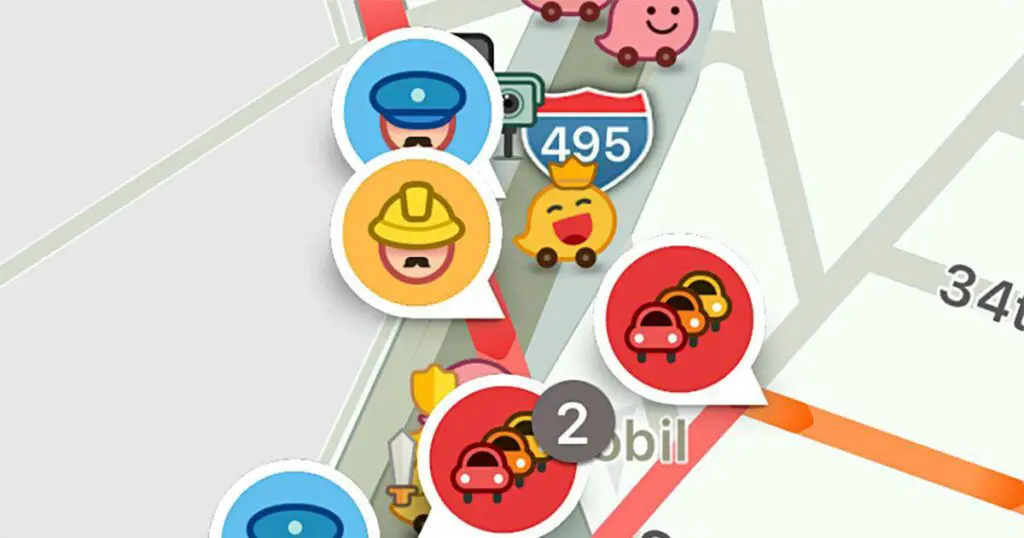Crowdsourced trading uses a group’s combined intelligence and expertise, whose members may come from anywhere to improve trading decisions. Traditional hedge funds often use crowdsourced trading to supplement their existing processes. While crowdsourcing has proven useful in other fields, trading comes with some unique, though not necessarily insurmountable, challenges.
What Is Crowdsourced Trading?
Crowdsourced trading is trading based on the combined intelligence and expertise of a group whose members may come from anywhere in the world.
Before we dive deeper into crowdsourced trading, let’s first take a step back and look at crowdsourcing in general.
Crowdsourcing is defined as “obtaining work, information, or opinions from a large group of people who submit their data via the Internet, social media, and smartphone apps.”
The rise of crowdsourcing has coincided with the diminishing barriers to sharing information. With the prevalence of smartphones, email, increased access to the internet, social media, etc., it is now possible to gather information at a size, scope, and speed previously unimaginable.
Crowdsourced information is all around us. Whether you realize it or not, you likely use some form of crowdsourced data regularly.
A popular example of crowdsourcing is Waze, which provides users with the fastest route to their destination based on real-time traffic patterns. The real-time data is possible due to users providing information and the app tracking the speed at which drivers move.

Other companies, such as Lays, Samsung, and Starbucks, rely heavily on crowdsourcing to gain customer input on everything from product development to marketing.
Based on the popularity of crowdsourcing in so many other areas of our lives, it makes sense that crowdsourcing has made its way to trading.
While crowdsourced trading is becoming more popular, trading is a unique field due to its complexity and higher entry barrier. Almost everyone can provide valuable data about traffic, but not everyone has useful information and experience to improve trading strategies.
The Pros & Cons of Crowdsourced Trading
As with any trading strategy, crowdsourced trading comes with both advantages and disadvantages, which vary to some degree depending on the type of crowdsourced trading in question. It’s essential to understand that not all crowdsourced trading is created equal by discussing the pros and cons of this unique data. Let’s look at two examples with vastly different levels of complexity.
Our first example is StockStream. The concept for StockStream came from an Amazon employee and was later bought by Cheddar, a news network that streams financial news.
StockStream crowdsources investment decisions by having users vote on which stocks to buy or sell. Trades are made every five minutes based exclusively on the votes of users. The trading is live-streamed, so users can watch as the trading occurs and make real-time decisions about StockStream’s investments.
On the other end of the spectrum, we have Quantopian. We’ll talk about Quantopian in more detail later in this post, but for now, what you need to know is that Quantopian was a quantitative investment firm that relied on crowdsourcing. Quantopian provided users with quantitative trading tools and data that the users could use to develop profitable algorithmic trading strategies.
As an aside, Quantopian is where I got started in algorithmic trading.
While some of the pros and cons of crowdsourced trading exist across the board, many of the pros and cons depend on the crowdsourced trading mode employed, as you can likely imagine.
Pros of Crowdsourced Trading
The most significant advantage of crowdsourced trading for traders is that it democratizes trading, while the most significant benefit for firms that employ crowdsourced trading is that it allows them to pull from a larger talent pool.
We’ll examine each of these in a bit more depth, beginning with how crowdsourced trading democratizes traders’ trading process.
In theory, anyone with an internet connection, and some money to invest could start trading. Still, there’s a difference between buying a few shares of companies you anticipate performing well and algorithm-based, quantitative trading. The latter has almost exclusively been reserved for massive hedge funds.
These giant hedge funds often trade billions of dollars daily. Access to this much capital allows them to invest in the latest technology and hire the best and brightest, which gives them a substantial competitive advantage. But some firms, such as Alpha Trading Labs, have begun experimenting with sharing their tech. This means that anyone anywhere can become a high-frequency trader.
Democratizing trading is potentially beneficial for those living outside of major cities or who lack sufficiently competitive resumes, but it’s not just traders who benefit.
With crowdsourcing, firms can take advantage of a larger talent pool. For example, a decade ago, someone in a small town in Indiana may have had the knowledge and experience to trade successfully, but most firms lacked a way to reach this individual.
Cons of Crowdsourced Trading
Crowdsourcing works in plenty of fields, but trading is a unique field due to how trading data differs from other data sets and how trading algorithms are tested. Both of these create potential areas of weakness for crowdsourced trading.
First, let’s talk about how trading data differ from data in other areas where crowdsourced technology is prevalent.
Most major crowdsourced data involves some form of machine learning. The problem is that trading data simultaneously provides too much and too little data for machine learning to contend. Yes, this sounds counterintuitive, but bear with me for a moment, and you’ll see what I mean.
Machine learning requires a vast amount of data. If we look exclusively at price data for a specific stock, the number of data points is insufficient to provide accurate solutions.
On the other hand, if we include the entire context in which price data exists, we have to consider every event that impacts a company – world events, company news, earnings reports from competitors, overall market sentiment, social media comments, etc. This is too complex a task, and even if we could find a dataset and compute power to handle it, it would likely lead to an overfit solution.
There’s also the problem of testing crowdsourced trading algorithms. Most of what’s on crowdsourced platforms isn’t that’s innovative. I would expect that teams of quantitative finance PhDs at a hedge fund would be more likely to find alpha than some scrappy retail traders. Additionally, even for those few retail traders who do come up with a tremendous algorithmic trading strategy, do you think they want to take the risk of sharing it publicly?
I know I didn’t…
To make the difference between trading data and other crowdsourced data a bit clearer, let’s compare crowdsourced trading to crowdsourced traffic data.
When traveling from point A to point B, there are a finite number of potential routes. Which route is quickest depends on a few specific variables such as the speed you can drive on each route’s streets, the number of stoplights, the traffic level, etc. There is also a correct answer to the time it will take to arrive at each destination.
I don’t mean to diminish the creation or impact of traffic apps (they’ve saved me countless hours over the years, and I certainly appreciate them). Still, when you compare this type of data to trading data, it’s evident that trading data is entirely different. It becomes quite clear why crowdsourced machine learning would struggle with something as complex and nuanced as trading.
Crowdsourced Hedge Funds
For all the reasons we just discussed, crowdsourced trading isn’t necessarily easy for a hedge fund to implement, but that hasn’t stopped many firms from trying.
The crowdsourced hedge fund model exists in various formats, including stand-alone firms, and as a way for traditional hedge funds to remain competitive.

For startup hedge funds basing their entire trading strategy on crowdsourced trading, the model varies a bit from firm to firm. Still, the basic concept is that traders provide algorithms and the firm provides the necessary technology. These hedge funds incentivize traders by giving them a share of the profits their algorithms bring in.
While these startup hedge funds may be the ones you’re more likely to hear about, traditional hedge funds are also dabbling in crowdsourced trading strategies.
For example, some traditional hedge funds such as Citadel and Two Sigma have taken advantage of the crowdsourced trading model by creating competitions for individuals outside of the company to design algorithms. This allows traditional hedge funds to benefit from talent outside of the typical talent pool.
We’ll now look at four examples of firms employing crowdsourced trading, some of which have seen more success than others.
The four firms we’ll discuss are:
- Quantopian
- Quantics
- QuantConnect
- Numerai
Quantopian
We’ll begin with Quantopian, a firm that got a lot of media attention a few years ago but is now no longer in existence, and also where I got my start in algorithmic trading.
John Fawcett launched Quantopian in 2011. In 2013, billionaire hedge fund manager Steve Cohen invested in the company, and in 2016, the well-known Silicon Valley venture capital firm Andreesen Horowitz also invested.
Quantopian’s model attempted to provide opportunities for data enthusiasts worldwide, but in a more complex and analytical framework than many other crowdsourced trading platforms.
How did it work?
On Quantopian’s platform, traders could submit trading algorithms they had created. Quantopian would review the presented algorithms. If it found one it wanted to use, it would offer the creator of the algorithm a licensing agreement. If Quantopian used the algorithm and generated a profit, the creator received a percent of the net profit (typically 10%).
Quantopian did not use just any good looking algorithm. The algorithms it selected had to meet specific criteria, such as a certain turnover and consistent profitability history.
In theory, this model does sound promising. It provides talented traders with the necessary tools to create effective strategies and share in the profits their algorithms bring in. For Quantopian, it allows taking advantage of talent anywhere globally and keeps the majority (90%) of the net profit from these algorithms.
The problem was that though the theory was good, the returns were not.
In Q3 of 2017, the New York Stock Exchange saw a 5% increase, while in that same period, Quantopian’s fund was down 3%. Between June and August of 2019, Quantopian was down 3%. In contrast, the S&P was up 6.6%, and StockStream, the previously mentioned crowdsourced trading platform where anyone with an internet connection could vote on trade, saw 8% returns for the same period.
In such a highly competitive market, Quantopian couldn’t compete. Not surprisingly, in October of 2020, Quantopian announced it was shutting down.
Quantiacs
Next up, we have Quantiacs, which hosts competitions to identify the most successful trading algorithms.
The Quantiacs model works much more like a typical hedge fund. Any individual may submit a trading algorithm to a regular algorithmic trading competition. The three highest performing trading algorithms from the competition receive guaranteed investments. First place receives a $1,000,000 investment, second place receives a $750,000 investment, and third place receives $500,000. The algorithm’s creator then gets to keep 50% of the performance fees for as long as the algorithm is used and continues to bring in returns.
How has this crowdsourced trading model performed?
Quantiacs doesn’t report returns as a fund, but you can view the winning algorithms’ performance. While many of the trading algorithms performed well during the competition phase, many went on to make little to no returns.
QuantConnect
QuantConnect is not a hedge fund but an algorithmic trading platform that allows the creator to license their algorithm for others to purchase.
QuantConnect is subscription-based, with various plans costing anywhere from $8, per month to $40 per month.
The QuantConnect model is truly based on the idea that anyone can create an effective algorithmic trading system.
QuantConnect offers free tutorials that provide necessary information about algorithmic trading and how to use the platform through its subscription.
One of the additional offerings that separate QuantConnect from other crowdsourced trading platforms is that it allows subscribers to trade in many markets, including futures, options, and foreign currencies. It even provides capabilities for trading in some cryptocurrencies.
Numerai
The final crowdsourced trading platform we’ll look at is Numerai, which stands out from other crowdsourced trading platforms due to its heavy use of machine learning and collaborative nature.
The San Francisco startup was founded in 2015. Unlike many other crowdsourced trading platforms, Numerai is collaborative instead of competitive.
How does a collaborative crowdsourced trading platform work?
Numerai gives financial data to data scientists. The data Numerai provides is abstract, and the data scientists receiving it are not told what the data represents. The idea is that different data scientists will approach the data in different ways, leading to new and novel solutions to problems.
In essence, everyone on Numerai is working together to try to solve a problem. The information all of the different data scientists provide is combined with machine learning technology to create one overall meta-model.
Since users of Numerai are working together instead of against each other, the compensation model is different from our previous examples. Data scientists who solve problems are compensated in cryptocurrency.
Numerai boasts an impressive list of both investors and advisers, including the co-founder of Renaissance Technologies, Howard Morgan, and the co-founder of Coinbase, Fred Ehrsam. It’s too early to tell if Numerai is the future of hedge funds or if it’ll be following in Quantopian’s footsteps.
In theory, Numerai doesn’t face many of the challenges of other crowdsourced trading platforms.
For example, on other crowdsourced trading platforms, we’ve looked at pit algorithmic strategies created by individual amateurs against professionals at the leading hedge funds who have PhDs. and access to top-of-the-line resources. While there are plenty of talented amateurs out there, this isn’t an entirely fair fight. On the other hand, if you pit the combined intelligence of thousands or even hundreds of thousands of amateurs against one professional, or even a group of professionals like Numerai does, the amateurs have a much better chance.
Is Crowdsourcing Trading Right For You?
Whether crowdsourced trading is right for you depends on the crowdsourced model you’re interested in, the amount of time you have to devote to trading, your geographic location, and much more.

Crowdsourced trading is creating a more democratized trading model, but before you begin working with any specific platform, you should consider what you hope to gain. Especially if you desire to earn any money, you’ll need to familiarize yourself with the platform, it’s compensation structure, and it’s target audience.
If you’re new to algorithmic trading, I believe it’s one of the best ways to start… maybe I’m biased, but while Quantopian didn’t work out for the creators, it surely worked out for me.